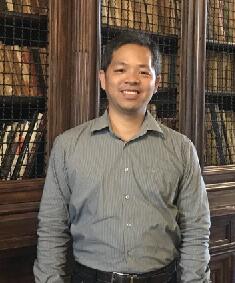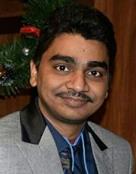
2019 International Conference on Machine Learning and Intelligent Systems (MLIS 2019)
National Dong Hwa University

 |
Prof. Wen-Huang Cheng Department of Electronics Engineering & Institute of Electronics, National Chiao Tung University Director of NCTU Artificial Intelligence and Multimedia Laboratory (AIMMLab) |
Biography: Wen-Huang Cheng received the B.S. and M.S. degrees in computer science and information engineering from National Taiwan University, Taipei, Taiwan, in 2002 and 2004, respectively, where he received the Ph.D. degree from the Graduate Institute of Networking and Multimedia in 2008. More... Speech Title: Industrial Innovations with Artificial Intelligence Abstract: Artificial intelligence across industries is on the rise. Artificial-intelligence-powered solutions have been actively implemented all the way from product development to customer experience. However, many technical challenges remain to be addressed. For example, virtual try-on of clothes in the fashion industry is a fashionable technology for the user to virtually try a desired outfit but clothing is difficult to render with visually realistic results due to the nature it deforms and reflects light in folds and crevices. This talk shares our experiences in working on innovative artificial intelligence solutions to overcome key technical challenges and turn the innovations into practical industrial applications. | |
 |
Prof. Milan Tuba Vice Rector for International Relations, Singidunum University Head of the Department of Mathematical Sciences, State University of Novi Pazar |
Biography: Milan Tuba is Vice Rector for International Relations, Singidunum University, Belgrade, Serbia and the Head of the Department for Mathematical Sciences at State University of Novi Pazar. He received B. S. in Mathematics, M. S. in Mathematics, M. S. in Computer Science, M. Ph. in Computer Science, Ph. D. in Computer Science from University of Belgrade and New York University. More... Speech Title: Swarm Intelligence applied to Machine Learning Abstract: Machine learning is a relatively new and very important scientific field that studies algorithms used to execute certain task without being explicitly programmed. Machine learning methods build models based on the sample data that search for patterns that will enable autonomous predictions or decisions when new unknown data are presented. Nowadays, machine learning methods are used in countless areas including economy, biology, medicine, autonomous vehicles, security, and many more. More... | |
 |
Prof. Kiyoshi Hoshino Graduate School of Systems and Information Engineering, University of Tsukuba |
Biography: Prof. Kiyoshi Hoshino received two doctor's degrees; one in Medical Science in 1993, and the other in Engineering in 1996, from the University of Tokyo respectively. From 1993 to 1995, he was an assistant professor at Tokyo Medical and Dental University School of Medicine. From 1995 to 2002, he was an associate professor at University of the Ryukyus. From 2002, he was an associate professor at the Biological Cybernetics Lab of University of Tsukuba. He is now a professor. From 1998 to 2001, he was jointly appointed as a senior researcher of the PRESTO "Information and Human Activity" project of the Japan Science and Technology Agency (JST). From 2002 to 2005, he was a project leader of a SORST project of JST. He served as a member of the “cultivation of human resources in the information science field” WG, Special Coordination Funds for the Promotion of Science and Technology, MEXT, a member of “Committee for Comport 3D Fundamental Technology Promotion”, JEITA, and the chairman of the 43rd Annual Meeting of Japanese Society of Biofeedback Research. Speech Title: Simultaneous Estimation of the Line-of-Sight and Rotational Eye Movement by Tracking of Blood Vessel Images of the Eye Abstract: The line-of-sight, which rotates around the x and y axes of the eyeball, provides information on what and how long one gaze at. This measurement is also expected to be effective in screening schizophrenia and dementia, and quantifying negative mental and psychological states, for instance, with sick-house syndromes and drug addicts. Moreover, the rotational eye movement, which rotes around the z axis, is expected to be useful in detecting and quantifying visually-induced motion sickness, 3D sickness, car sickness, space sickness, dizziness, sudden development of poor physical condition. Besides, gravitational acceleration may affect the visual system when the line-of-sight is performed with the head or the body trunk tilted, as seen in car driving or athletic sports. To meet these expectations, the author introduces a method focusing on the images of blood vessels in the white part of the eye (the conjunctiva and the sclera), where the blood vessel images are tracked to estimate simultaneously both the sight-line direction and the rotational eye movement with high accuracy. The estimation is carried out mainly based on the intensity gradients of the blood vessels. | |
 |
Dr. Nilanjan Dey Department of Information Technology, Techno India College of Technology |
Biography: Nilanjan Dey is an Assistant Professor in Department of Information Technology at Techno India College of Technology, Kolkata. He has completed his PhD. in 2015 from Jadavpur University. He is a Visiting Fellow of Wearables Computing Laboratory, Department of Biomedical Engineering Univeristy of Reading, UK, Visiting Professor of Duy Tan University, Vietnam. He has held honorary position of Visiting Scientist at Global Biomedical Technologies Inc., CA, USA (2012-2015). More... Speech Title: Computer-aided detection and diagnosis in medical imaging Abstract: Advancement in medical imaging modalities results in huge varieties of images engaged in the different management phases, namely prognosis, diagnosis, and treatment. In clinical practice, imaging has reserved a vital role to assist physicians and medical expert in decision-making. However, the counterpart that faces the physician is the complexity to deal with a large amount of data and image contents. Mainly, the interpretation is based on the physician’s observations, which is tedious, subject to error, and highly depends on the skills and experience of the clinicians. Accordingly, an emerging demand for automated tools become essential for detecting, quantifying and classifying the disease for accurate diagnosis. More... | |